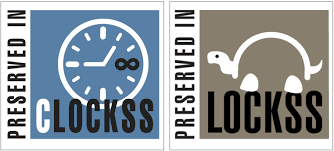THE ROLE OF SONGS AND SINGING IN THE EVERYDAY PRACTICES OF THE UPA AND OUN SOLDIERS IN ZAKERZONNIA
DOI:
https://doi.org/10.24919/2519-058X.36.339343Abstract
The purpose of the research is to elucidate and characterize the everyday military practices related to singing and the use of music among the UPA and OUN soldiers in Zakerzonnia region in 1944 – 1947. Research Methodology. The study is based on an interdisciplinary approach that combines the analysis of memoir sources and insurgent documents with theoretical developments in military anthropology, social psychology, and musicology. In the research musicological approaches and concepts have been applied that explain the role of a collective singing in shaping group identity and in combat situations. Scientific Novelty. This article represents the first attempt to explore the anthropological dimension of the use of songs and singing in daily lives of the UPA and OUN soldiers in Zakerzonnia. The research expands the understanding of musical practices in military environments and opens new perspectives for studying the impact of a song on the psychological state and combat effectiveness of military formations. Conclusions. Thus, the role of a song and singing in everyday practices of the UPA and OUN soldiers in Zakerzonnia was multidimensional. The analysis of the sources shows that music served not only an entertainment or emotional function but also acted as a powerful tool for psychological adaptation, group identification, and even tactical influence on the enemy. This study identifies the functions that singing and songs played in the daily lives of the Ukrainian combatants. In particular, singing and songs served as a means of rest and leisure; accompaniment for celebrations and rituals; a tool for unity and communication; emotional support and stress relief; a marker of national identity and the distinction between “us” and “them”; an instrument of ideological influence and propaganda; support in combat situations; and the final act before death. Collective singing contributed to the formation of group identity and the maintenance of morale. Singing practices united combatants and civilians, becoming a kind of ritual that strengthened camaraderie and mutual understanding. Singing played a crucial role in regulating emotional states, alleviating anxiety, and improving mood. The article argues that the phenomenon of “combat singing” was used as a means of influencing the enemy. By analyzing these aspects, we not only gain a deeper understanding of the psychology and culture of the Ukrainian underground but also acquire a broader perspective on the role of music in military conflicts in general.
Key words: Ukrainian Insurgent Army, Organization of Ukrainian Nationalists, Zakerzonnia, combat singing, everyday life, military anthropology.
References
Boroch, R. (2021). Military Anthropology – Specialisation Frame. Wiedza Obronna, 274 (1), 63–73. DOI: 10.34752/2021-d274 [in English].
Clark, J. N. (2023). Music, Resilience and “Soundscaping”: Some Reflections on the War in Ukraine. Cultural Sociology, 18(1), 150–170. DOI: 10.1177/17499755231151216 [in English].
Demian, H. (2003). Ukrainski povstanski pisni 1940 – 2000-kh rokiv: istoryko-folklorystychne doslidzhennia [Ukrainian Insurgent Songs of the 1940s–2000s: A Historical and Folkloristic Study]. Lviv: Halytska vydavnycha spilka; Kyiv: Ukrainska vydavnycha spilka. [in Ukrainian].
Dmytryk, I. (1992). Zapysky ukrainskoho povstantsia (U lisakh Lemkivshchyny) [Memories of a Soldier in the Ukrainian Insurgent Army. In the Forest of Lemko Region]. Lviv: Chervona Kalyna. [in Ukrainian].
Grant, M. J. (2020). On Music and War. Transposition, 2, 3–4. DOI: 10.4000/transposition.4469 [in English].
Grant, M. J., Möllemann, R., Morlandstö, I., Münz, C. S., & Nuxoll, C. (2010). Music and Conflict: Interdisciplinary Perspectives. Interdisciplinary Science Reviews, 35(2), 183–198. DOI: 10.1179/030801810X12723585301237 [in English].
Halasa, V. (2005). Nashe zhyttia i borotba. Spohady [Our Life and Struggle. Memoirs]. Lviv: Vydavnytstvo “Ms”. [in Ukrainian].
Harasymiv, I. (1999). Litopys Ukrainskoi Povstanskoi Armii [Chronicle of the Ukrainian Insurgent Army]. (Vol. 29). Toronto–Lviv: Litopys UPA. [in Ukrainian].
Hishchynskyi, Ye. (Comp.) (2007). Za voliu Ukrainy: antolohiia pisen natsionalno-vyzvolnykh zmahan [For the Freedom of Ukraine: An Anthology of Songs of the National Liberation Movements]. Lutsk: Volynska knyha. [in Ukrainian].
Hromenko, M. (2000). U velykomu reidi [In the Great Raid]. Lviv: Atlas. [in Ukrainian].
Huk, B. (1994). Zakerzonnia. Spohady voiakiv Ukrainskoi povstanskoi armii [Zakerzonnia. Memoirs of the Soldiers of the Ukrainian Insurgent Army]. (Vol. 1). Varshava: Tyrsa. [in Ukrainian].
Huk, B. (1996). Zakerzonnia. Spohady voiakiv Ukrainskoi povstanskoi armii [Zakerzonnia. Memoirs of the Soldiers of the Ukrainian Insurgent Army]. (Vol. 2). Varshava: Tyrsa. [in Ukrainian].
Huk, B. (1998). Zakerzonnia. Spohady voiakiv Ukrainskoi povstanskoi armii [Zakerzonnia. Memoirs of the Soldiers of the Ukrainian Insurgent Army]. (Vol. 4). Varshava: Tyrsa. [in Ukrainian].
Ivanyk, M., & Bokhno, M. (Eds.) (2012). Bastion i Baturyn. UPA ta pidpilna administratsiia OUN v Yaroslavshchyni, Liubachivshchyni ta Tomashivshchyni v rr. 1944 – 1947: Dokumenty ta materialy [Bastion and Baturyn Documents and Materials for History of Insurgency in Yaroslav, Liubachiv and Tomashiv Regions in 1944 – 1947]. Vydavnytstvo Lvivskoi Politekhniky. [in Ukrainian].
Jordania, J. (2011). Why Do People Sing? Music in Human Evolution. Logos, 212 p. [in English].
Karvanska-Bailiak, A. (2000). Vo imia Tvoie: (merezhane zhyttiam) [In Your Name: Life on the Web]. Varshava: Ukrainskyi arkhiv. [in Ukrainian].
Kmet, Ye. (2000). Spohady. Liubachyvshchyna na shliakhu borotby [Memoirs. Liubachivshchyna on the Path of Struggle]. Dnipropetrovsk: Borysten. [in Ukrainian].
Kobylianskyi, V. (2013). Muzyka v zhytti ukrainskykh povstantsiv na Prykarpatti (druha polovyna 1940-kh – pochatok 1950-kh rr.) [Music in the Life of Ukrainian Insurgents in Prykarpattia (Second Half of the 1940s – Beginning of the 1950s)]. Halychyna, 24, 331–343. [in Ukrainian].
Kordan, I. (2006). Odyn nabii z nabiinytsi. Spomyny voiaka UPA z kurenia “Zalizniaka” [One Bullet in the Clip. Memoirs of a Soldier of the Ukrainian Insurgent Army from “Zalizniak`s” Battalion]. Toronto–Lviv: Litopys UPA. [in Ukrainian].
Kulchytskyi, V. (2011). Natsionalno-vykhovnyi potentsial povstanskoi tvorchosti pershoi polovyny XX stolittia [National-Educational Potential of Rebellion’s art in the First Half of the 20th Century]. Visnyk Zhytomyrskoho derzhavnoho universytetu im. I. Franka, 55, 71–74. [in Ukrainian].
Labunka, M. (2015). Koly lis buv nash batko. Spomyny [When the Forest was our Father. Memories]. Kyiv: Osnovy. [in Ukrainian].
Lavryshyn, Z. (Ed.) (1996). Litopys Ukrainskoi Povstanskoi Armii [Chronicle of the Ukrainian Insurgent Army]. (Vol. 25: Pisni UPA [Songs of the UPA]). Toronto–Lviv: Litopys UPA. [in Ukrainian].
Lenko, N. (1999). Na mezhovii zemli (spohady z Zakerzonnia) [On the Border Land (memories from Zakerzonnya)]. Kyiv: Vydannia zhurnalu “Pamiat stolit”. [in Ukrainian].
Luno, Ye. (2014). Povstanskyi heroichnyi epos i pytannia suchasnoho derzhavotvorennia [The insurrectional epic tradition in the modern development of statehood]. Narodoznavchi zoshyty. Seriia filolohichna, 3, 502–513. [in Ukrainian].
Lyko, I. (2002). Litopys Ukrainskoi Povstanskoi Armii [Chronicle of the Ukrainian Insurgent Army]. (Vol. 37: Na hrani mrii i diisnosty: Spohady pidpilnyka [At the Edge of a Dream and Reality. Memoirs of a Revolutionary]). Toronto–Lviv: Litopys UPA. [in Ukrainian].
Peretz, I. (2006). The nature of music from a biological perspective. Cognition, 100 (1), 1–32. DOI: 10.1016/j.cognition.2005.11.004 [in English].
Potichnyi, P. (Ed.) (2003). Litopys Ukrainskoi Povstanskoi Armii [Chronicle of the Ukrainian Insurgent Army]. (Vol. 39: Taktychnyi vidtynok UPA 28-y “Danyliv” Kholmshchyna i Pidliashshia (Dokumenty i materialy) [The UPA Tactical Sector “Danyliv” 28 Chełm and Pidliashshia Regions (Documents and Materials)]). Toronto–Lviv: Litopys UPA. [in Ukrainian].
Potichnyi, P., & Lyko, I. (Eds.) (2001a). Litopys Ukrainskoi Povstanskoi Armii [Chronicle of the Ukrainian Insurgent Army]. (Vol. 33: Taktychnyi Vidtynok UPA 26-y “Lemko”: Lemkivshchyna i Peremyshchyna (Dokumenty i materialy) [The UPA Tactical Sector “Lemko” 26: Lemkivshchyna and Peremyshl Regions (Documents and Materials)]). Toronto–Lviv: Litopys UPA. [in Ukrainian].
Potichnyi, P., & Lyko, I. (Eds.) (2001b). Litopys Ukrainskoi Povstanskoi Armii [Chronicle of the Ukrainian Insurgent Army]. (Vol. 34: Lemkivshchyna i Peremyshchyna politychni zvity (Dokumenty i materialy) [Lemkivshchyna and Peremyshl Regions Political Reports (Documents)]). Toronto–Lviv: Litopys UPA. [in Ukrainian].
Potichnyi, P., & Viatrovych, V. (Eds.) (2003). Litopys Ukrainskoi Povstanskoi Armii [Chronicle of the Ukrainian Insurgent Army]. (Vol. 4: Spohady voiakiv UPA ta uchasnykiv zbroinoho pidpillia Lvivshchyny ta Liubachivshchyny [Memoirs of the UPA Soldiers and Members of the Armed Underground in L’viv and Liubachiv Regions]). Toronto–Lviv: Litopys UPA. [in Ukrainian].
Reed, M. (2016). “A Singing Army is a Fighting Army”: American Soldiers’ Songs and the Training Camp Experience in World War I. Voces Novae, 8, Article 6. [in English].
Savchyn, M. (1995). Litopys Ukrainskoi Povstanskoi Armii [Chronicle of the Ukrainian Insurgent Army]. (Vol. 28: Tysiacha dorih [Thousands of Roads]). Toronto–Lviv: Litopys UPA. [in Ukrainian].
Schafer, T., Sedlmeier, P., Stadler, C., & Huron, D. (2013). The Psychological Functions of Music Listening. Frontiers in Psychology, 4, 511. DOI: 10.3389/fpsyg.2013.00511 [in English].
Shtendera, Ye. (1986). Litopys Ukrainskoi Povstanskoi Armii [Chronicle of the Ukrainian Insurgent Army]. (Vol. 13: Peremyskyi kurin [Peremyshl battalion]. Book 1: Dennyk viddilu “Burlaky” (Volodymyra Shchyhelskoho) [Journals of the “Burlaka” Detachment (Volodymyr Shchyhelskyi)]). Toronto–Lviv: Litopys UPA. [in Ukrainian].
Shtendera, Ye. (1987). Litopys Ukrainskoi Povstanskoi Armii [Chronicle of the Ukrainian Insurgent Army]. (Vol. 14: Peremyskyi kurin [Peremyshl Battalion]. Book 2: Dennyky y dokumenty [Journals and documents]). Toronto–Lviv: Litopys UPA. [in Ukrainian].
Sokil, H. (2023). Heroika povstanskykh pisen [Heroism of Rebel Songs]. Narodoznavchi zoshyty, 1 (169), 250–256. [in Ukrainian].
Tsiapka, D. (1975). Horyt Lis! [The Forest Aflame]. London: Ukrainska Vydavnycha Spilka, 398 p. [in Ukrainian].
Turchyn-Duvirak, D. (2011). Pro poetychno-muzychnyi svit pisen UPA [On the Poetic and Musical World of the UPA Songs]. In Ukrainska Povstanska Armiia inakshe (v literaturi, mystetstvi, kulturi), (pp. 17–25). Praha: Slovianska biblioteka. [in Ukrainian].
Tymochko, I. (2005). Moia odysseia [My Odysseys]. Varshava: Ukrainskyi Arkhiv. [in Ukrainian].
Wegner, N. (2021). Ritual, Rhythms, and the Discomforting Endurance of Militarism: Affective Methodologies and Ethico-Political Challenges. Global Studies Quarterly, 1 (3), 1–10. DOI: 10.1093/isagsq/ksab008 [in English].
Yovyk, I. (1995). Neskorena armiia [Undefeated Army]. Kyiv: MP “Lesia”. [in Ukrainian].
Downloads
Published
How to Cite
Issue
Section
License

This work is licensed under a Creative Commons Attribution-NonCommercial-NoDerivatives 4.0 International License.





